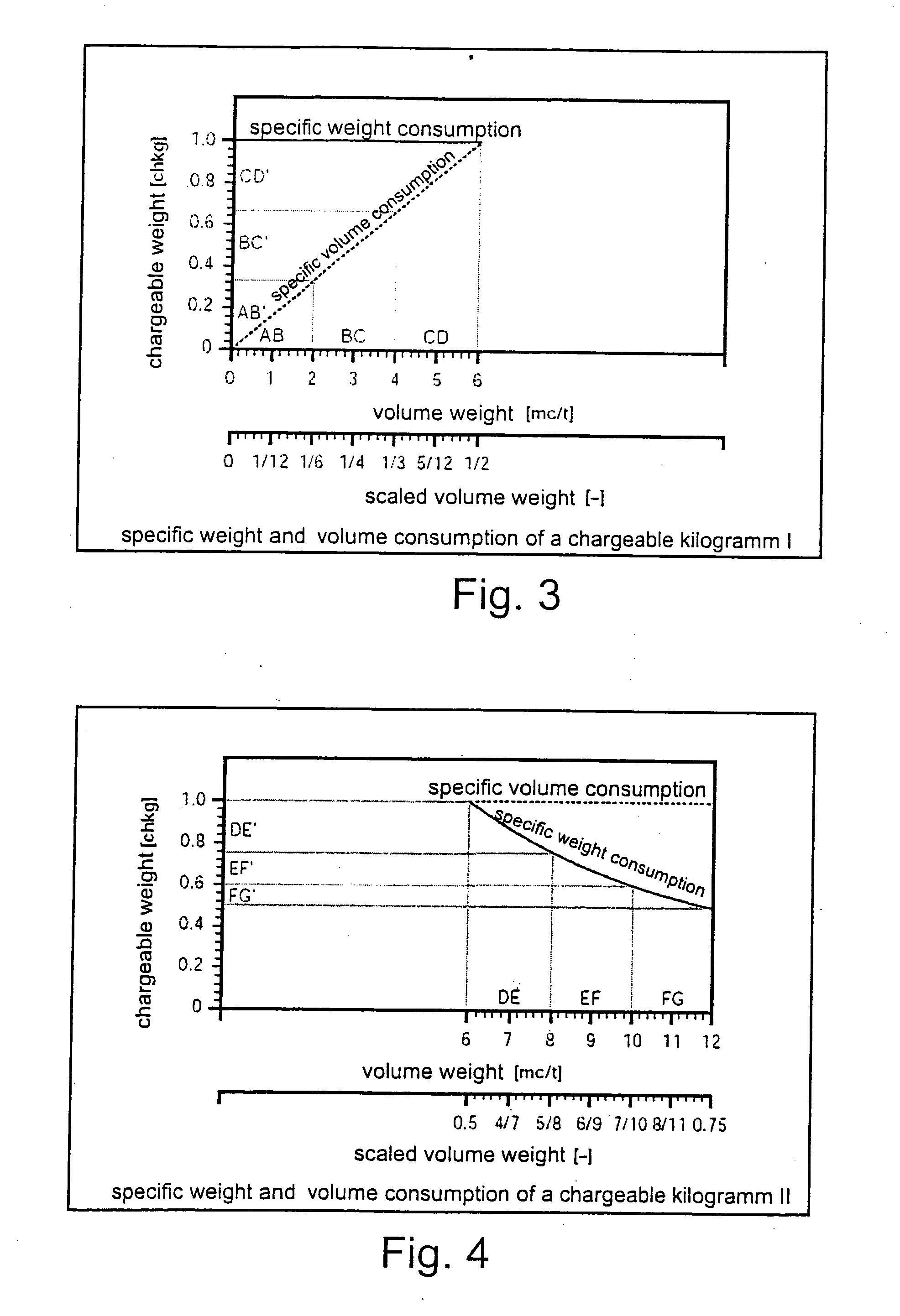System and method for optimizing the utilization of a cargo space and for maximizing the revenue from a cargo transport
- Summary
- Abstract
- Description
- Claims
- Application Information
AI Technical Summary
Problems solved by technology
Method used
Image
Examples
Embodiment Construction
[0028] Disclosed herein are systems and methods for optimizing the utilization of a cargo space and for maximizing the revenue from a cargo transport. In one exemplary embodiment, a method is provided in which [0029] for a cargo transport, incoming transport requests for cargo units n are recorded, in particular for each transport request, with regard to its volume Vn, preferably in the unit m3, with regard to its weight Wn, preferably in the unit t, and, in given cases, with regard to its rate rn as price, preferably in an officially recognized currency unit, per chargeable weight unit cw, preferably in chargeable kg, [0030] the volume weights dn of the cargo units n, preferably in m3 / t, are determined in the course of which, [0031] if the weight Wn of the nth cargo unit>0 and volume Vn of the nth cargo unit≧0, then the volume weight dn=(Vn / Wn), [0032] if the weight Wn of the nth cargo unit=0 and volume Vn of the nth cargo unit>0, then the volume weight dn=∞, and [0033] if the weig...
PUM
 Login to View More
Login to View More Abstract
Description
Claims
Application Information
 Login to View More
Login to View More - R&D
- Intellectual Property
- Life Sciences
- Materials
- Tech Scout
- Unparalleled Data Quality
- Higher Quality Content
- 60% Fewer Hallucinations
Browse by: Latest US Patents, China's latest patents, Technical Efficacy Thesaurus, Application Domain, Technology Topic, Popular Technical Reports.
© 2025 PatSnap. All rights reserved.Legal|Privacy policy|Modern Slavery Act Transparency Statement|Sitemap|About US| Contact US: help@patsnap.com



